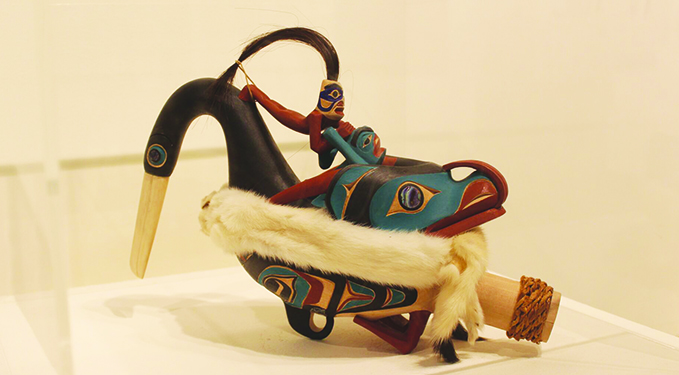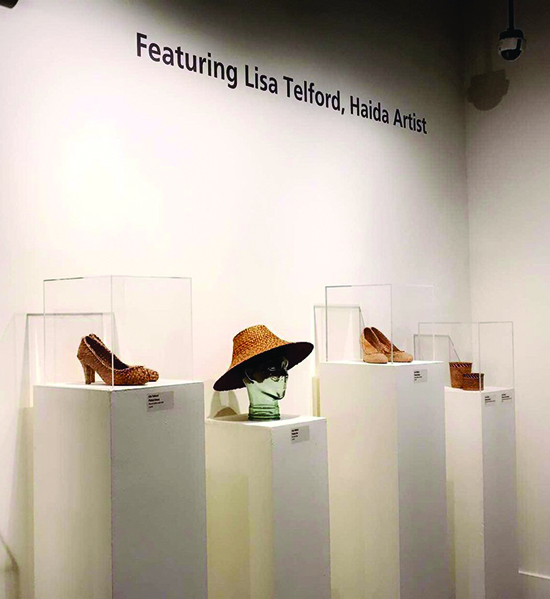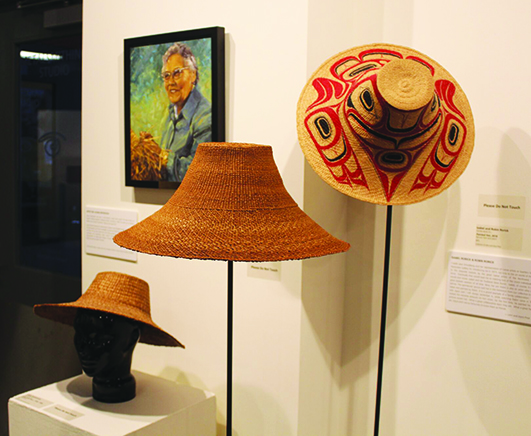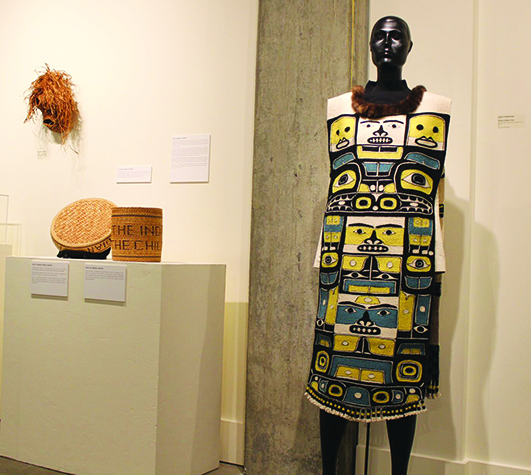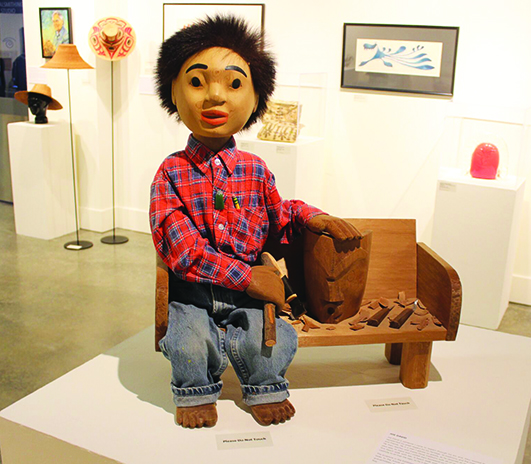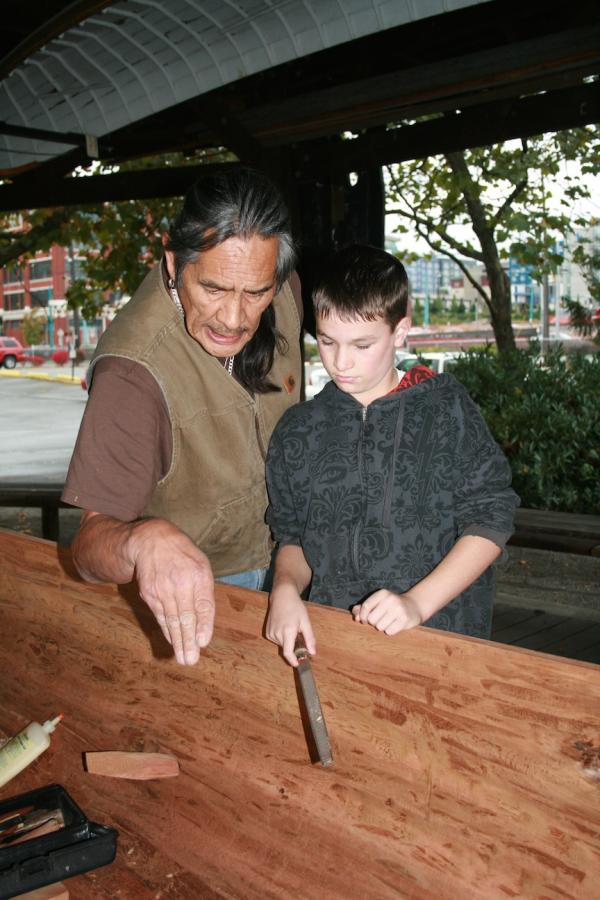Article and photos by Kalvin Valdillez
The National Basketry Organization (NBO) is a non-profit organization consisting of basket-makers, collectors, art gallery owners, students, schools and museums. Members from the organization recently traveled to the Northwest for a basketry conference held in Tacoma.
Fiber Artist, Jan Hopkins, wanted to host a Native American art gala at her home in Everett, for the NBO. Unfortunately, due to conflicting times, NBO members informed Jan that they would be unable to attend her event. The organization, however, originally scheduled time to tour Everett’s Schack Art Center, where Jan’s husband, Chris, frequently showcases his paintings. Jan contacted art collectors John Price and Nancy Kovalik as well as Haida Master Weaver, Lisa Telford, to see if they were interested in showcasing their Haida art collections at the Schack for the NBO.
With the art collectors and Lisa on board, the Art Center allowed Jan to guest curate Courtesy of: Extraordinary Basketry, Textiles and Sculptures from the Northwest Collections. The exhibit features paintings, carvings and weavings created by Haida artists Delores Churchill, Isabelle Rorick and Evelyn Vanderhoop – to name a few.
Lisa, who also works for the Tulalip TERO program, is a world renowned Haida Weaver. Her works are featured in museums nationwide including exhibits at the Burke Museum in Seattle, the Heard Museum in Phoenix, the Hallie Ford Museum of Art in Salem and the Museum of Arts and Design in New York.
“[Weaving] is my thread to sanity,” states Lisa. “When my older brother passed, the first person in my family to pass away that affected me, I didn’t weave for about six months. When I started weaving again, I went to work on Monday and everybody asked ‘what happened to you’ and when I said nothing, they said ‘yeah, something life changing happened to you this weekend because you’re glowing.’ I feel like it keeps me grounded and it makes me happy, so I just say it’s my thread to sanity, when I do it I’m happy, I don’t know how else to say it.”
“I come from a family of weavers; everybody wove,” continued Lisa. “My grandmother wanted to teach me when I was thirteen, but when you’re thirteen you’re too busy running around to settle down. My grandmother sat me down and said ‘I want to show you something,’ and I said ‘I don’t have time for that.’ I always regretted that. After she passed away, I moved to Washington and joined a dance group and I wore her hat. People would ask ‘where’d you get that hat?’ and when I said my grandma, they asked ‘can she could make any more?’ That’s what made me start weaving. I realized that I took it all for granted. I told my mom and she called my auntie and shortly after that I started apprenticing for my aunt Dolores.”
Lisa created six weavings for the exhibit. Her art submissions include a big spoon basket, a traditional hat, two small baskets as well as two pairs of cedar high heel shoes.
“I think it was probably in 1999, this fellow from the Heard Museum asked me if I would give a pair of shoes for this show called Sole Stories,” explains Lisa.
After trial and error, she created a pair of high heels, using BBs and a dress weight to shape the shoes. When submitting the shoes, the museum was shocked by her invention.
“I brought them to the show, the guy goes ‘Oh my God! I didn’t know you were going to make a pair of shoes. I didn’t even know that was possible! I meant a pair of your personal shoes.’ Now people keep wanting the shoes, even after I say I’m done with it. Every time I think I’m done, they pull me back in,” she states.
Many of the works that were provided by the art collectors, were weaved by Lisa’s family members.
“It really could be called my family’s show because the person who wove the tunic was my cousin Evelyn, the person who wove the canoe cape was my cousin Holly and the person who wove the robe was my aunt Dolores,” Lisa exclaimed.
The Courtesy of: Extraordinary Basketry, Textiles and Sculptures from the Northwest Collections exhibit is featured until July 29 at the Schack Art Center., 2921 Hoyt Ave, Everett, WA 98201. For additional information, please visit www.Schack.org
